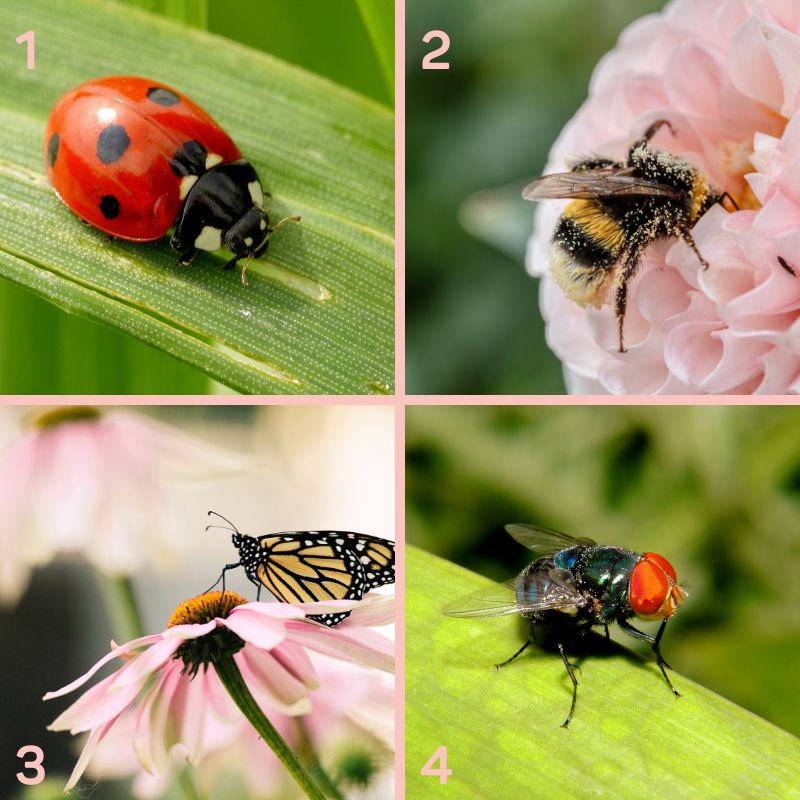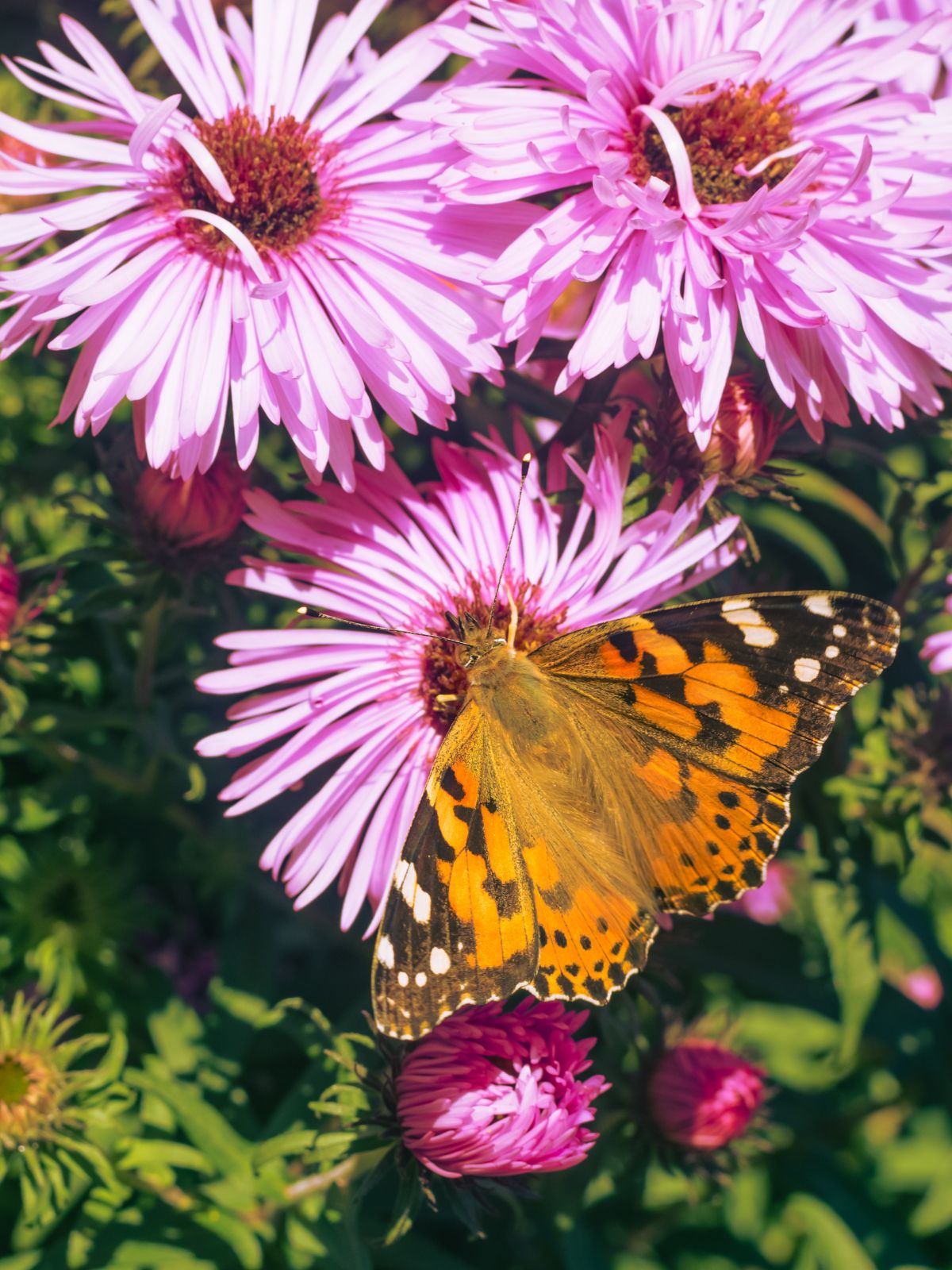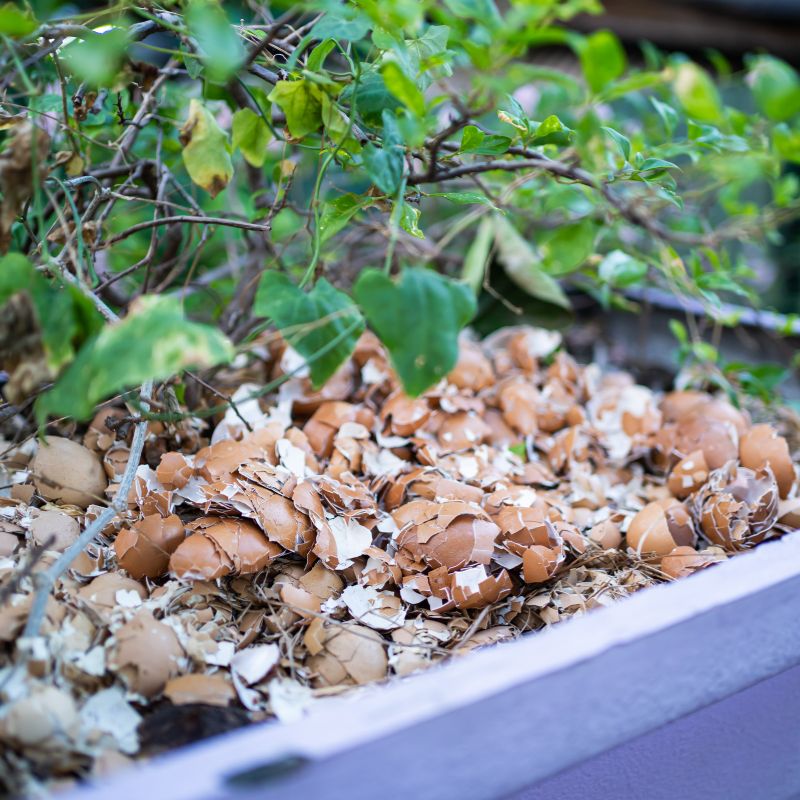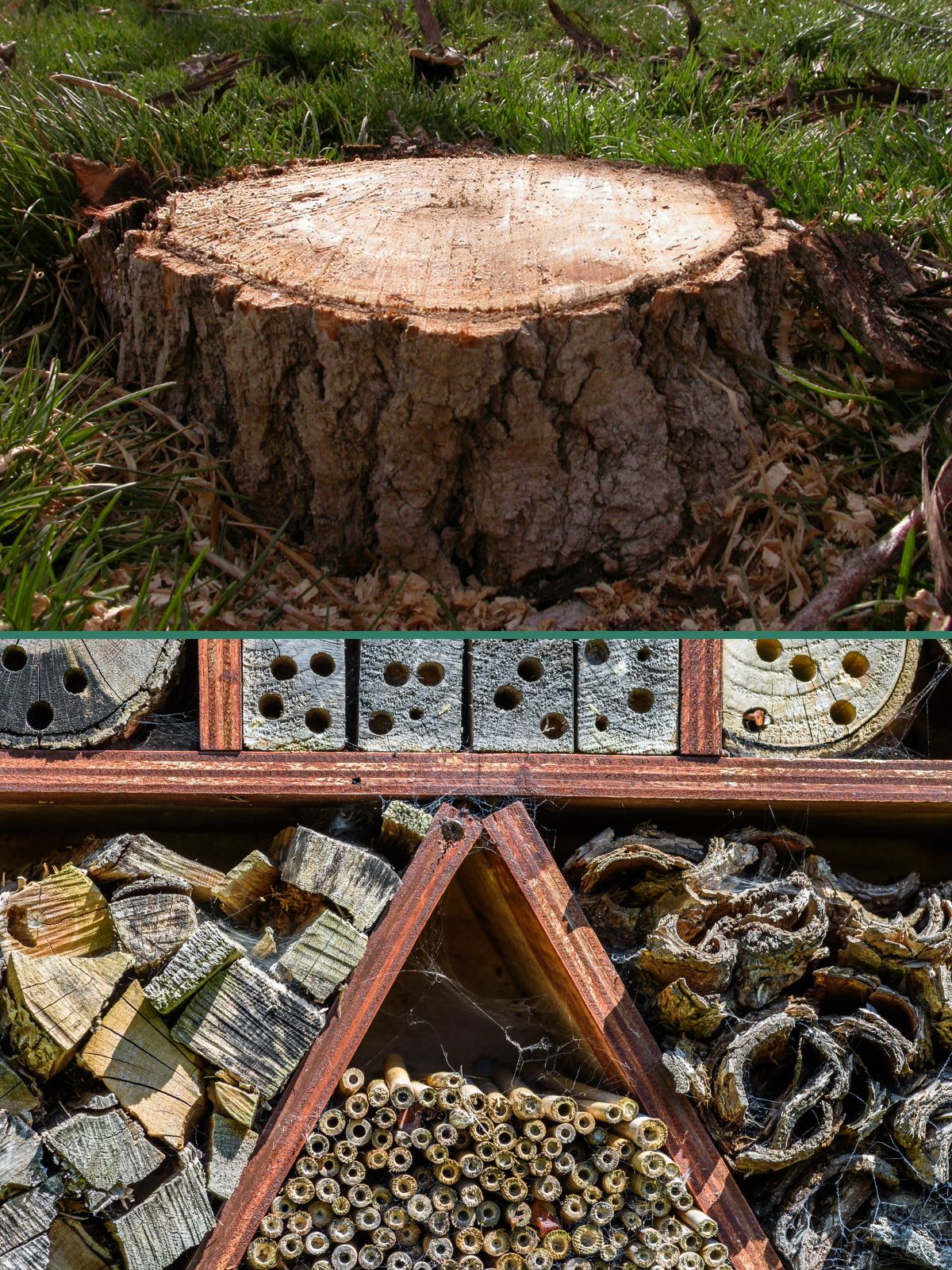You know the importance of pollinating insects in your garden. Yes, they are great workers contributing to the diversity of ecosystems. Indeed, thanks to pollination, their existence is essential for the reproduction of many plants. Our team has therefore taken it upon itself to share with you its little tips for making your garden more welcoming for these little creatures.
Who are pollinating insects?
Did you know that 20,000 to 25,000 insects feed on flowers? These are so-called floricultural insects. Everyone has a different level of pollination. You can also find all these little people among different families of insects.
- Beetles: This is where you will partly find Scarabs, Longicorns, and also Ladybugs…
- Hymenoptera: Made up in part of our friends Bees, Wasps, and even Ants, there are nearly 10,000 species in mainland France!
- Diptera: Made up of many families of flies and mosquitoes…
- Lepidoptera: among which you will find day and night butterflies
- Eh yes ! These pollinating insects are very numerous. So why is it better to attract them to your garden ?
A little word about pollination
First of all, you should know that pollination is a step before fertilization in the life cycle of plants. It corresponds to the transport of pollen from the male reproductive organs (stamens) to the female reproductive organ (s) (pistil). They allow the sexual reproduction of plants. Pollination can be carried out by water and wind, but mainly by animals and largely thanks to insects.
Yes yes! Nearly 90% of wild plants are pollinated by insects and 75% of cultivated plants You will understand that our friends, the pollinating insects, provide essential ecological work. Despite their importance to the proper development of life on earth, many threats endanger their lives There are many causes for the disappearance of pollinators. Among them, you will find : pollution, the destruction of their habitats, the use of synthetic fertilizer, intensive mowing, and even climate change That’s a lot, don’t you think? 😢 For all these reasons, it is essential to help them. In addition, nothing could be easier, by adopting certain habits in the garden you will already be doing a lot for them. The objective? Vary the ecosystem of your garden to make their arrival easier.
How to create an environment conducive to pollinating insects?
Sometimes you don’t need much to increase biodiversity in your garden. Find out which plants to favor from our team and how to adapt your garden to these little creatures. ✨
1. Which plants to choose to attract pollinators?
Two choices will be available to choose the most suitable plants. Favor native and honey plants The advantage of native plants is that they are already adapted to your local ecosystem. They will therefore offer our insect friends a natural and abundant food source. They change depending on the region, they are different due to the land, climate, and environment where you are located. You can sometimes get them at events where people barter or sell seeds, and also at garden centers. To help you, here are some examples of native plants that you will find by region:
- European charcoal and Etrurian honeysuckle
- The Centaurea
- Centre-Val de Loire: The field rose bush and the broom broom
- Tansy
- Eurasian milfoil and floating glycerin
- Loosestrife
Otherwise, opt for a safe bet: flowers rich in nectar and pollen are called honey plants. To give you just a few examples: Wisteria, Bueno-Aires Verbena, and the Butterfly Tree.
The butterfly tree is available in several colors. 😁 As its name suggests, this shrub will attract a lot of butterflies, but also other foragers to your garden. Its magnificent panicles, rich in nectar, evoke candles and give off a sweet scent of honey. Place it at the bottom of a flower bed, it will be majestic in the background.
- Flowering period: June to September
- Rapid growth
- Height at maturity: 3 m
- Hardiness: -29°C
Chinese wisteria is a splendid climbing plant that attracts many pollinators to your garden. You will surely fall under the spell of its purple flowers in clusters with a sweet powdery scent. It is ideal for bringing color and graphics to small gardens. Imagine, on top of that, she can live up to 50 years! So don’t wait any longer and add it to your exterior. 😉
- Flowering period: April to May
- Rapid growth
- Height at maturity: 8 m
- Hardiness: -23.5°C
Perennial plants are appreciated for their small bouquets of purplish flowers often associated with small clouds. A subtle sweet scent escapes, attracting various butterflies. It will give your flowerbeds a light and airy feel. It hides other advantages such as its excellent resistance to drought and its ease of cultivation.
- Flowering period: July to August
- Growth: Normal
- Height at maturity: 1 m
- Hardiness: -29°C
This is only a non-exhaustive selection of honey plants but you can find a lot of them of all kinds.
2. A thoughtful layout
Did you know that one of the most important tips for attracting little critters is to add a wide variety of plants to your garden creating beds with a succession of botanical interest? Indeed, our software allows you to create beds composed of robust plants with successive flowerings thanks to the expertise of a botanist. So, the ecological aspect comes into play! Thanks to the diversity in the plants chosen, you will attract a stable diversity in all your beneficial auxiliaries in the garden.
3. No to harmful pesticides
As you may already have guessed, avoid using harmful pesticides. Instead, opt for natural alternatives, which can control pests while keeping pollinating insects healthy.
💡Little natural tips :
- Broken egg shells protect your plants from snails.
- Ladybugs rid you of the aphids they love.
- A solution of water and black soap can scare away mealybugs.
- Nettle, fern, or horsetail manure kills aphids, strengthens your plants, and fights against mildew, powdery mildew, scab, and rust. Quite effective, isn’t it?
Some organic products are also very effective. For example, we recommend a product that we use to combat larvae and caterpillars: the organic insecticide from the Solabiol brand. Often, these products are composed of natural essential oils. So these are a great alternative if you want a ready-to-use solution. Use these tips for the health of your garden and all its inhabitants. By integrating these natural treatments into your green haven, you will make it stronger and more radiant than ever. 😌
4. A diverse habitat
Yes, it is also essential to offer a diverse habitat in your garden or environment. To do this, create refuge areas such as dense bushes, a watering hole, woodpiles, or insect hotels. Don’t be afraid to let nature do its work. Sometimes, it is by leaving an old stump of dead wood, scraps of wood, or even dead leaves that you will naturally welcome insects beneficial to your garden.
Avoid clearing your garden too much to leave wild areas where they can breed and feed. By providing a range of habitats and resources, you promote species diversity and help maintain healthy, vibrant populations of pollinating insects.
Did you know? Building your own insect house is not that complicated. Equip yourself with natural, healthy elements which, for the most part, come from your garden. Once you have gathered all the necessary materials, you will simply need to build a house.
Finally, fill the structure with different natural materials: pine cones, hazel, dry branches, and bark… All you have to do is install it in your garden, protected from predators.
With all these solutions you are sure to provide support to our insect friends. On top of that, your garden will be even more radiant! Biodiversity in the garden is an essential subject to which you may be more or less sensitive, however, our team hopes to see you discover some tips. Pssst! Moreover, if you wish, do not hesitate to read up on the right actions to adapt to the garden. 😍














